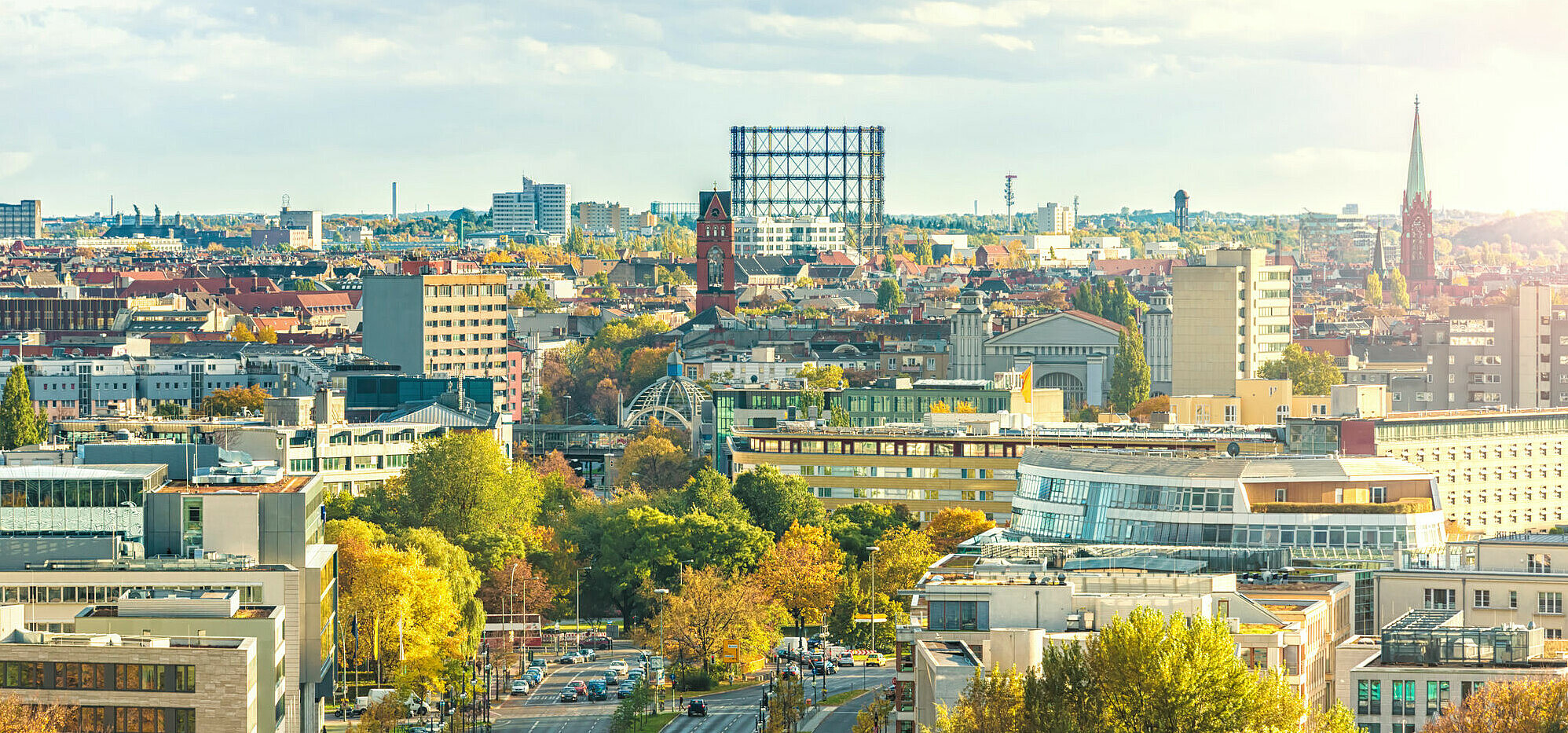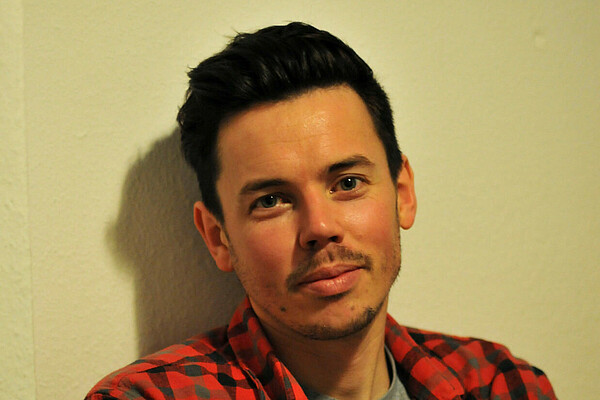Tempelhof-Schöneberg: Vibrant, open-minded and steeped in history
From the shopping street Tauentzienstraße in the city center to contemplative housing estates in the south of Berlin – the district Tempelhof-Schöneberg offers urban flair, paired with a high quality of life and, above all, a lot of history.
Excellent conditions for a variety of businesses
The proximity to the city, the government district and the surrounding area makes Tempelhof-Schöneberg a business location in a prime setting, characterized by a large variety of industries. The district is made up of two complementary districts.
- Tempelhof belongs to Berlins big industrial sites and – in addition to international corporations – many small and medium-sized companies in high-tech and traditional industries have settled there. The Tempelhof Airport and the Berlin Blockade will always remain in the memory of Berlin as the “Airlift of Solidarity”, while the airfield has today been taken over by the people as park for recreation and leisure.
- Schöneberg on the other hand, is shaped by service and retail economy, with the KaDeWe standing synonymously for a special shopping experience. A dazzling gastronomy, culture and design scene has settled between Nollendorfplatz and main street. It was also the Schöneberg Town Hall, where, 50 years ago, John F. Kennedy made his famous speech, proclaiming “Ich bin ein Berliner”.
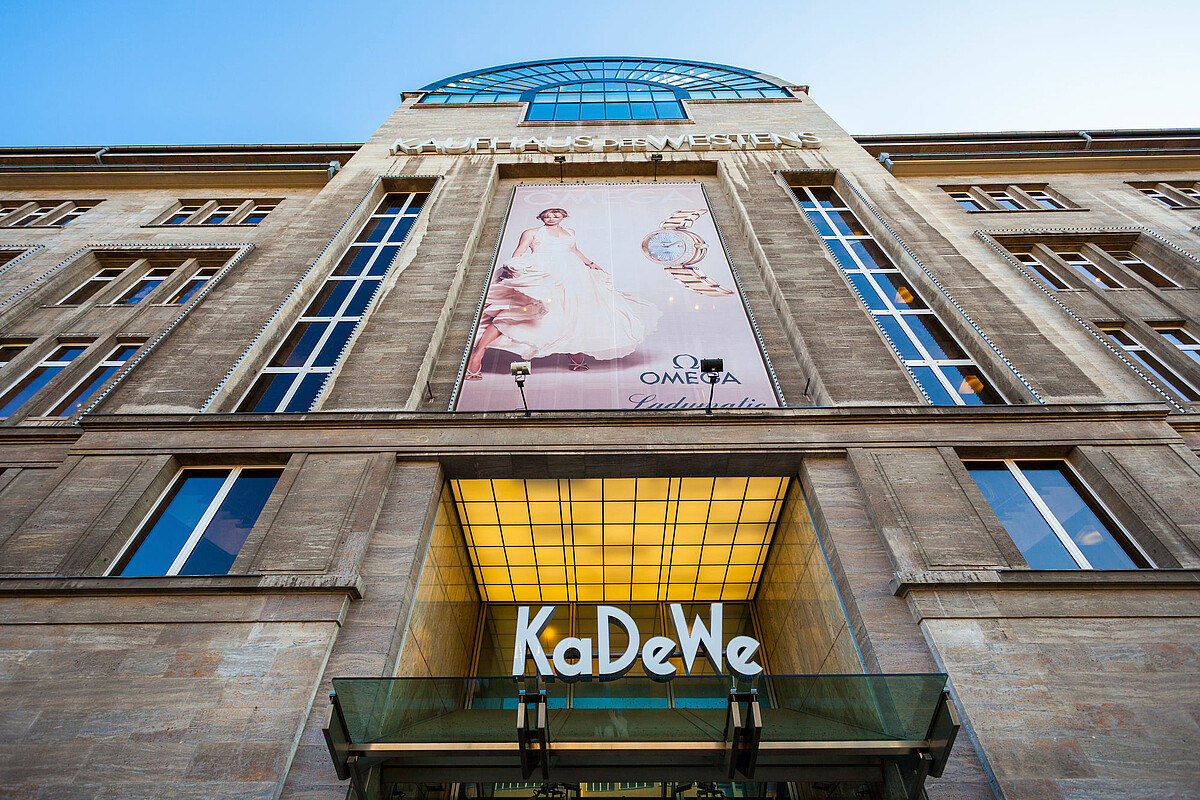
Three major industrial and commercial locations
Tempelhof-Schöneberg is conveniently located and can be reached via the motorway A 100 and the train station Südkreuz, which is used by nearly 90,000 travellers per day. 541 hectares, or 10.2 percent of the district’s area, are active industrial and commercial sites.
The area Großbeerenstraße is situated near the Berliner Ring Autobahn, the downtown area, the Berlin-Brandenburg International Airport and the southern and eastern freight centres of Berlin, thus it is one of Berlin’s largest industrial zones. Among other companies that have joined the Großbeerenstraße Network, the Daimler Group is operating its oldest manufacturing plant, where the V6 diesel engine BlueEfficiency or BlueTec is manufactured using state-of-the-art and environmentally friendly technologies.
The Teltowkanal area on the outskirts of the city centre also provides ideal conditions for companies through track and waterway connections as well as access to the A 100. The field mix ranges from metal and electrical engineering to optics, medicine and measurement technology, as well as food. About 13,200 people are here directly employed in 550 companies, including big players like Bahlsen and Procter & Gamble/Gillette.
In the very south of the district, the Motzener Strasse commercial and industrial park has attracted companies like Dr. Kade Pharma, Ehlebracht, Hettich, KBE / profine, Klosterfrau, Selux and Stollwerck. The area also registers the highest share of manufacturing in Berlin: 80 percent of the 7,100 employees work in the industrial sector.
Learn more about the Berlin Partner business support at the district level or get in touch directly with the local manager for Tempelhof-Schöneberg.
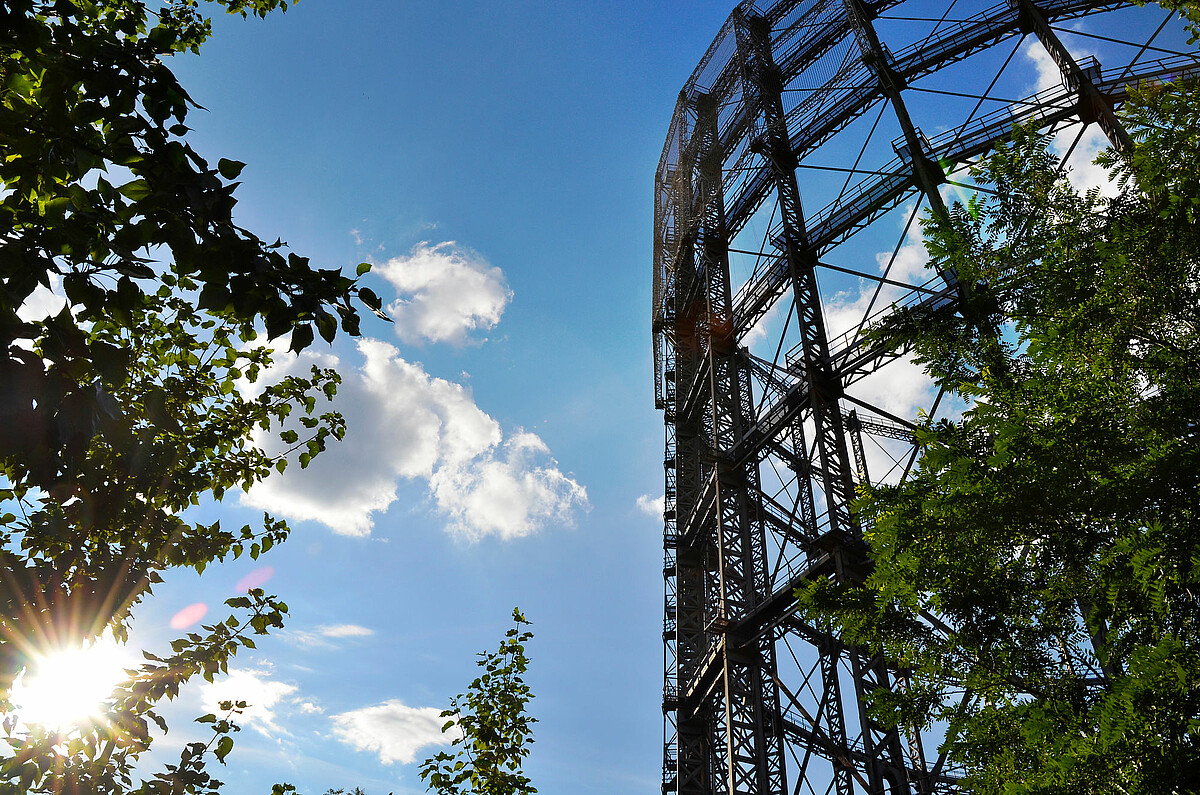
Committed to startups and sustainability
Ecologically and economically sustainable solutions for the smart city of the future are being developed around the Gasometer in Schöneberg. On the EUREF-Campusscience and sustainability education are closely linked with practical research and application. For example, the Technische Universität Berlin, located at the TU-Campus EUREF, offers master programmes in the sector of “city and energy”.
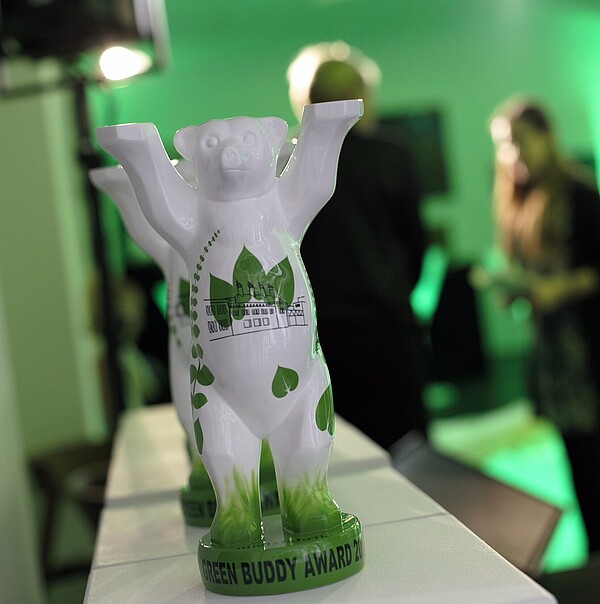
With more than 9,000 students the Hochschule für Wirtschaft und Recht Berlin (Berlin school of economics and Law) is also one of Berlin’s largest universities of applied sciences and has close ties to the business world. The faculty of economics and business administration is located at the Schöneberg campus as is the startup-center of the university, which supports startups with advisory services and rooms. The founding activities are comparatively high: According to the founder index of 2014, 8.7 percent of the newly founded startups in Berlin can be attributed to Tempelhof-Schöneberg.
The district further demonstrates its efforts to protect the environment by granting the annual Green Buddy award to companies that are committed to ecology and sustainability.
CityLAB Berlin – shaping Berlin’s future
Recently opened in June 2019, the CityLAB Berlin has moved into the former officers’ hotel of the US Army in the Tempelhof Airport. It’s an experimental laboratory to develop new ideas for a liveable future city of Berlin. Combining elements of a digital workshop, coworking and event space the CityLAB encourages co-creation processes and intends to create new forms of civic participation.
The lab is operated by the senate together with the technology foundation of Berlin. With its central position the CityLAB invites every Berlin citizen, institute and startup to join and propose new ideas for a progressive and digital capital.

Learn more about the Berlin Partner business support at the district level or get in touch directly with the local manager for Tempelhof-Schöneberg.
Urban development plans until 2030
In recent years, the demand for economic areas and commercial real estate in Berlin’s inner city and metropolitan area has grown enormously. To deal with this scarcity of space, particularly in the centre and western part of the capital, the Berlin senate, together with district representatives and economic institutions, have created a spatial model of urban development.
In Tempelhof-Schöneberg, especially near Teltow-Kanal and between Großbeerenstraße and Motzener Straße (blue, checkered area) new commercial estates will be developed . The blue circle around the EUREF-Campus shows the priority area for additional space for inner-city-affine businesses. The dottet areas are covering favourable locations with regard to the new Berlin-Brandenburg airport. Take a look at the future development of Tempelhof-Schöneberg (green frame).
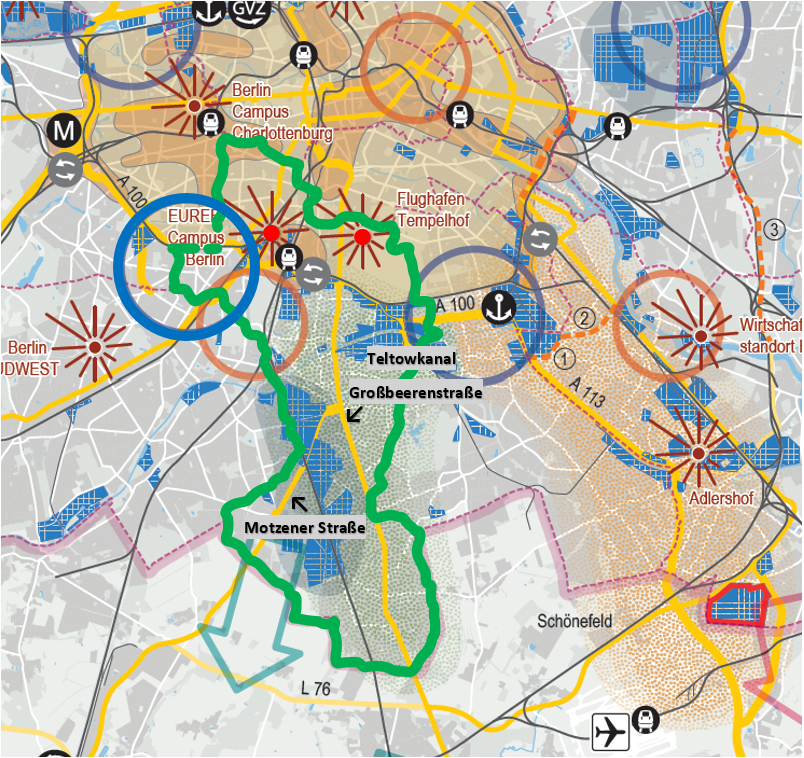
Locational advantages at a glance
- Large industrial estates and industrial parks
- Rich offer of commercial areas
- Different surface sizes available
- Excellent connections to public urban transport as well as to city motorways and to local and long-distance traffic
- Active enterprise networks
- Proximity to government and parliament, airport and surrounding area
- Multiple universities of applied sciences and innovative future locations
Learn more about the touristic hotspots in Tempelhof-Schöneberg and enjoy this video:
Header: querbeet – istockphoto.com

